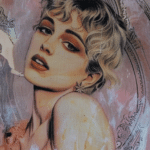Entwined Destinies: 5 Twin Flame Archetypes that Captivate Readers of Classic Literature
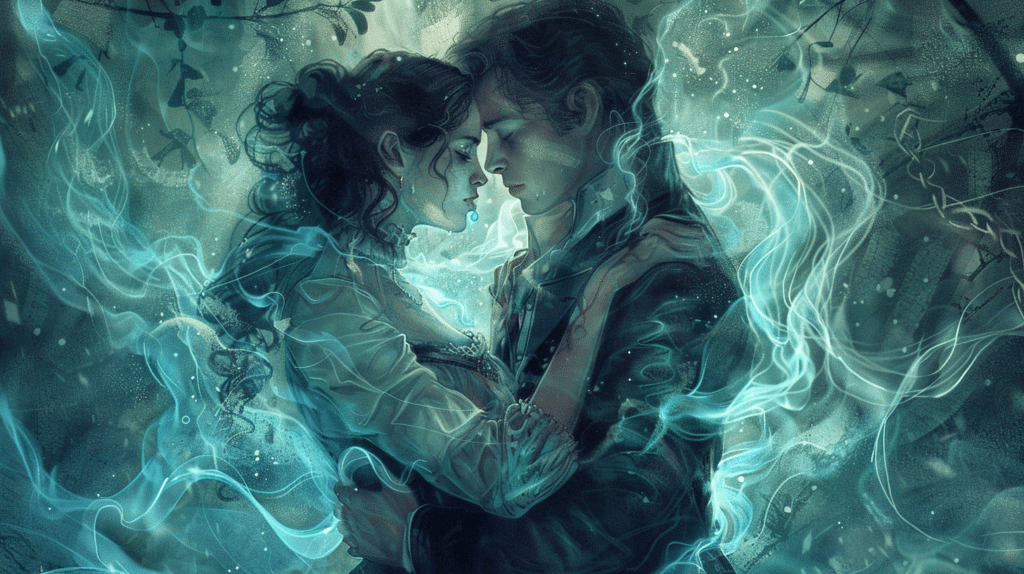
Romeo and Juliet by William Shakespeare
Continuing the exploration of twin flame dynamics in classic literature, William Shakespeare’s “Romeo and Juliet” provides a quintessential example of this profound connection. This iconic play explores the intense and immediate bond between two young lovers, whose relationship is often seen as the embodiment of the twin flame connection.
Their story delves into the themes of destiny, love at first sight, and the idea that two souls are meant to be together despite external conflicts, characteristic of many twin flame narratives.
The twin flame dynamics in “Romeo and Juliet” are highlighted by the instant and deep connection the characters experience upon meeting. The intensity of their love, which feels both fated and doomed, reflects common twin flame elements of overcoming obstacles and the transformative power of their bond. This connection doesn’t merely represent romantic love but suggests a merging of souls, designed to ignite a profound change within each other and, ultimately, lead to tragic consequences.
Shakespeare’s portrayal of Romeo and Juliet as twin flames is evident through their dialogue and actions, which convey a sense of completeness and understanding that transcends the physical realm. Their relationship mirrors the twin flame journey’s stages, from an instant recognition of a deep connection to the inevitable challenges and, ultimately, to a tragic separation that emphasizes the depth of their bond.
Another layer of twin flame symbolism in this classic book is the couple’s willingness to challenge societal norms and face seemingly insurmountable obstacles together. Their story unfolds the idea that twin flames find in each other a mirror, reflecting not only what they aspire to be but also the very essence of their being, pushing them towards self-awareness and growth.
In Romeo and Juliet, Shakespeare also touches on the concept of the mythical love that twin flames share, suggesting that their love is eternal and transcends the physical boundaries of life and death. This concept resonates with the twin flame belief that the connection is not merely of this world but is part of a greater, cosmic journey.
This exploration into the twin flame dynamics in “Romeo and Juliet” reflects how William Shakespeare contributed to the enduring appeal of twin flame stories in classic literature. Through the tragic tale of Romeo and Juliet, Shakespeare invites readers to ponder the complexities and depth of the twin flame connection, creating a timeless narrative that continues to captivate audiences with its exploration of love’s transformative power.

Jane Eyre and Mr. Rochester in Jane Eyre by Charlotte Brontë
Exploring the twin flame dynamics in classic literature leads us to the compelling narrative of Jane Eyre and Mr. Rochester in Charlotte Brontë’s “Jane Eyre.” This masterpiece presents a profound twin flame connection that challenges and transcends societal norms, making it a quintessential example of twin flame relationships in novels. Their relationship exemplifies the transformative power of love, mirroring the intense and complex dynamics often associated with twin flames.
Their initial meeting isn’t marked by love at first sight, common in stories like “Romeo and Juliet.” Instead, Jane and Mr. Rochester’s connection deepens over time, grounded in mutual respect, intellectual compatibility, and emotional support. This gradual development showcases a different aspect of twin flame dynamics in famous books, emphasizing growth, understanding, and healing as key components.
The twin flame journey in “Jane Eyre” is fraught with obstacles, from societal pressures to personal secrets. These challenges serve to strengthen their bond, illustrating how twin flames often encounter hardships that are meant to foster personal growth and self-awareness. Through these trials, Jane and Mr. Rochester reflect on their own identities, with their love acting as a catalyst for change and self-discovery.
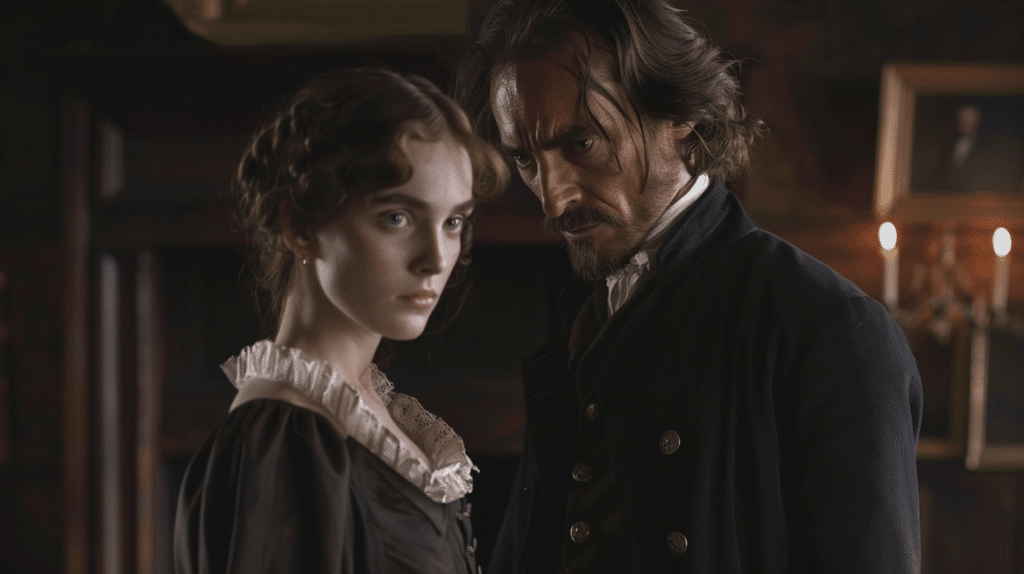
Moreover, the twin flame symbolism in “Jane Eyre” is evident in the way Brontë weaves elements of spiritual connection and fate into their relationship. Despite their separation, there’s a powerful sense that they are bound to reunite, highlighting the twin flame belief in an unbreakable bond and destiny bringing lovers together.
Lastly, “Jane Eyre” addresses the concept of equality within the twin flame connection in a profound way. Jane insists on maintaining her autonomy and moral integrity, asserting that real love can only flourish under conditions of mutual respect and equality. This aspect of their relationship underscores the twin flame dynamics as mirrors for each other’s growth, promoting a balanced and harmonious union.
Through the story of Jane Eyre and Mr. Rochester, Brontë effectively captures the essence of twin flame connections, from their complex challenges to the deep, transformative love that defines them. Their journey offers rich insights into twin flame dynamics in classic literature, celebrating the enduring appeal of these profound connections.
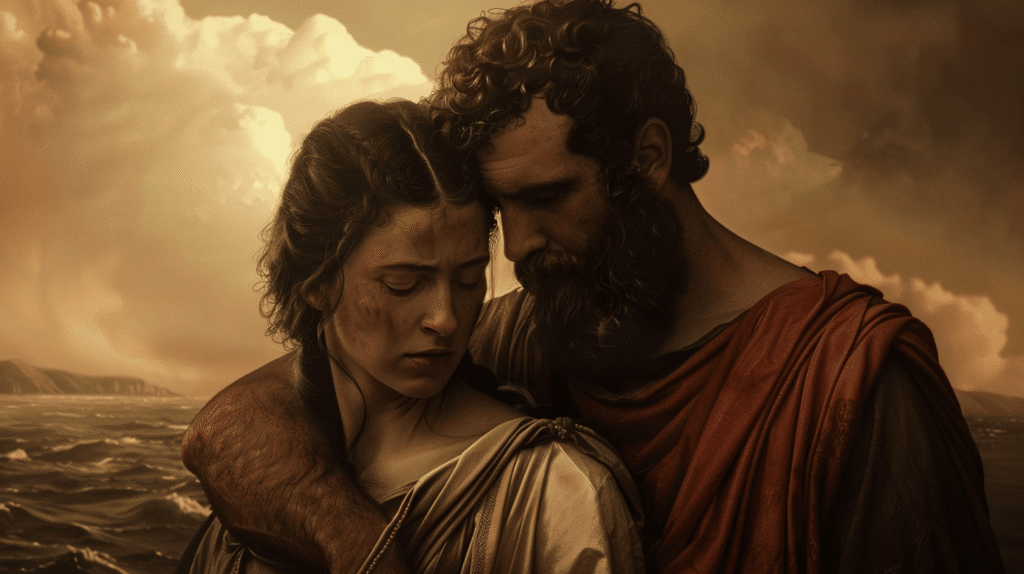
Odysseus and Penelope in Homer’s Odyssey
In the realm of classic literature, the twin flame dynamic between Odysseus and Penelope in Homer’s “Odyssey” stands as a quintessential example of an enduring twin flame connection. This narrative beautifully encapsulates the essence of twin flame relationships through its portrayal of unwavering loyalty, love, and the triumph over immense challenges.
Odysseus and Penelope’s relationship is a hallmark of twin flame dynamics in famous books, illustrating a profound bond that survives the test of time and numerous obstacles. Despite being physically separated for 20 years, their connection remains unbroken, proving that the twin flame bond transcends physical presence.
Penelope’s faith in Odysseus’s return, amidst suitors pressuring her to remarry, and Odysseus’s relentless quest to return home to her, showcases the twin flame archetype of unwavering loyalty and belief in one another.
Their story also highlights critical elements of the twin flame journey in literary works, including the theme of spiritual growth and self-discovery. Throughout his odyssey, Odysseus undergoes significant personal transformation, encountering various trials that hone his character and wisdom.
Similarly, Penelope demonstrates resilience, cleverness, and emotional strength, managing her kingdom in Odysseus’s absence. This mutual growth reflects the twin flame dynamics of evolving together, even when apart, and serving as a mirror for each other’s self-improvement.

Moreover, the reunion of Odysseus and Penelope symbolizes the twin flame belief in destiny and the inevitable coming together of twin souls.
Their ability to recognize each other, beyond superficial changes and after years of separation, resonates with the twin flame themes of deep connection and understanding beyond the physical realm.
Odysseus and Penelope exemplify the twin flame dynamics in classic literature, portraying a love story that encompasses loyalty, personal growth, and the power of an unbreakable bond.
Their narrative offers invaluable insights into understanding twin flame connections through literary characters, presenting a timeless exploration of love’s enduring strength and the spiritual journey of twin flames.
Tristan and Isolde in the Arthurian legends
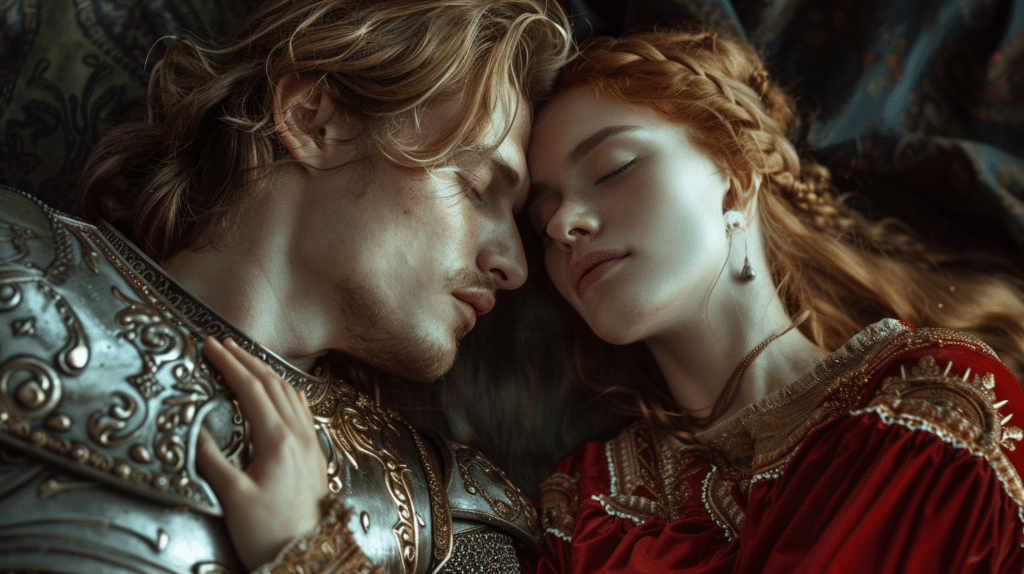
Tristan and Isolde’s story, deeply rooted in Arthurian legends, serves as a poignant example of twin flame dynamics in classic literature. Their narrative, embroidered with themes of forbidden love and destiny, highlights the quintessential elements of a twin flame connection that transcends societal norms and personal boundaries.
This twin flame relationship is emblematic of the intense, almost mystical bond that twin flames share, marked by an immediate and deep connection, passion, and a sense of completeness when together.
The legend of Tristan and Isolde encapsulates the twin flame journey through their immediate attraction and the subsequent obstacles they face, mirroring the twin flame stages of recognition, crisis, runner and chaser dynamics, and eventual reunion on a spiritual level.
Their love story is fraught with challenges, including Isolde’s betrothal to King Mark of Cornwall, Tristan’s uncle, which adds layers of complexity and depth to their twin flame relationship. This forbidden aspect of their love highlights the transformative power of twin flame connections, pushing each other towards personal growth and evolution, even in the face of societal constraints.
Unlike other twin flame relationships explored in classic literature, such as Odysseus and Penelope’s enduring bond or the spiritually ascendant love between Dante and Beatrice, Tristan and Isolde’s narrative leans heavily into the tragic aspects of the twin flame journey. Their story emphasizes the sacrificial and selfless nature of true love, akin to the themes found in the twin flame dynamics between Sydney Carton and Lucie Manette.
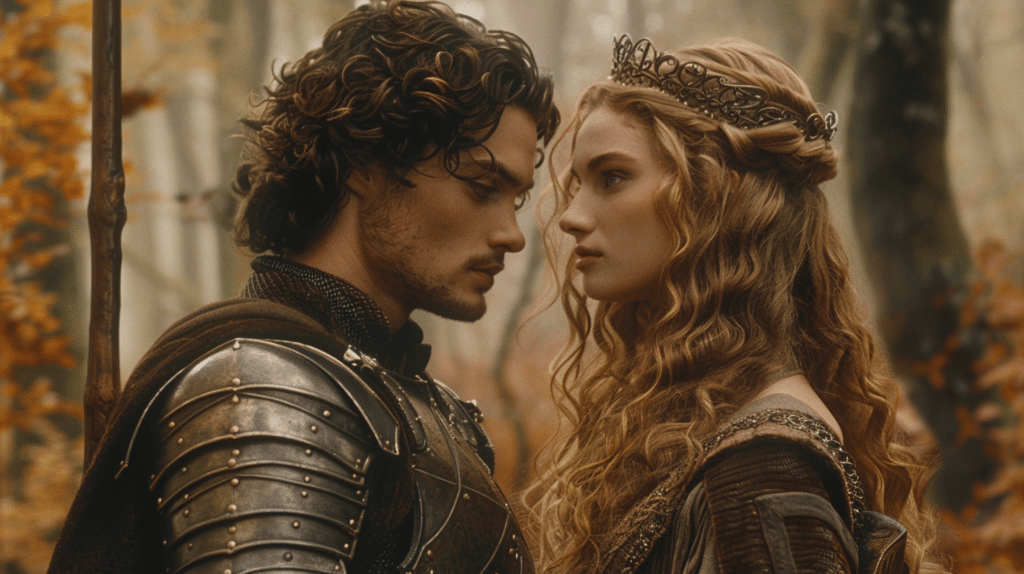
Tristan and Isolde’s narrative is a rich tapestry of twin flame symbolism in classic books, showcasing the enduring appeal of such profound connections. The love potion they inadvertently share symbolizes the inevitable and fated nature of their bond, illustrating how twin flames are drawn together irresistibly, despite external circumstances or internal conflicts.
Tristan and Isolde’s forbidden twin flame love stands as a testament to the timeless exploration of twin flame relationships in novels. Their story, like many others in classic literature, offers insight into the complexities, challenges, and unparalleled beauty of twin flame connections, proving that such themes have captivated human imagination for centuries.
Through their narrative, readers gain a deeper understanding of twin flame dynamics, witnessing how classic authors have depicted these intense relationships across various literary works.
Dante and Beatrice in Dante’s Divine Comedy
Dante and Beatrice’s relationship in “Dante’s Divine Comedy” exemplifies a spiritual twin flame bond that transcends the confines of Earth, guiding readers through an exploration of love’s power in the spiritual realm. Their connection illuminates the path to divine love and wisdom, showcasing the ideal twin flame dynamics in classic literature. Unlike the turbulent passions found in stories such as Tristan and Isolde’s forbidden twin flame love, Dante and Beatrice share a purer, almost celestial bond that underpins the narrative’s spiritual journey.
The Significance of Dante and Beatrice’s Twin Flame Bond
Dante’s depiction of Beatrice as not just a guide but a heavenly beacon highlights the spiritual essence of twin flame relationships. Beatrice’s role transcends that of a mere romantic interest; she embodies divine wisdom and grace, steering Dante away from perdition towards enlightenment and redemption. This representation aligns with the twin flame dynamics in famous books, where the twin flame serves not only as a partner but also as a catalyst for personal and spiritual growth.
Twin Flame Elements in Dante’s Divine Comedy
The twin flame elements in “Dante’s Divine Comedy” are rich with twin flame symbolism in classic books. The journey through Hell, Purgatory, and Paradise mirrors the twin flame journey in literary works, symbolizing the trials, transformations, and eventual union that characterizes these profound connections. Dante and Beatrice’s bond elevates the notion of love from mere physical attraction to a divine communion, reflecting twin flame dynamics’ depth and complexity.
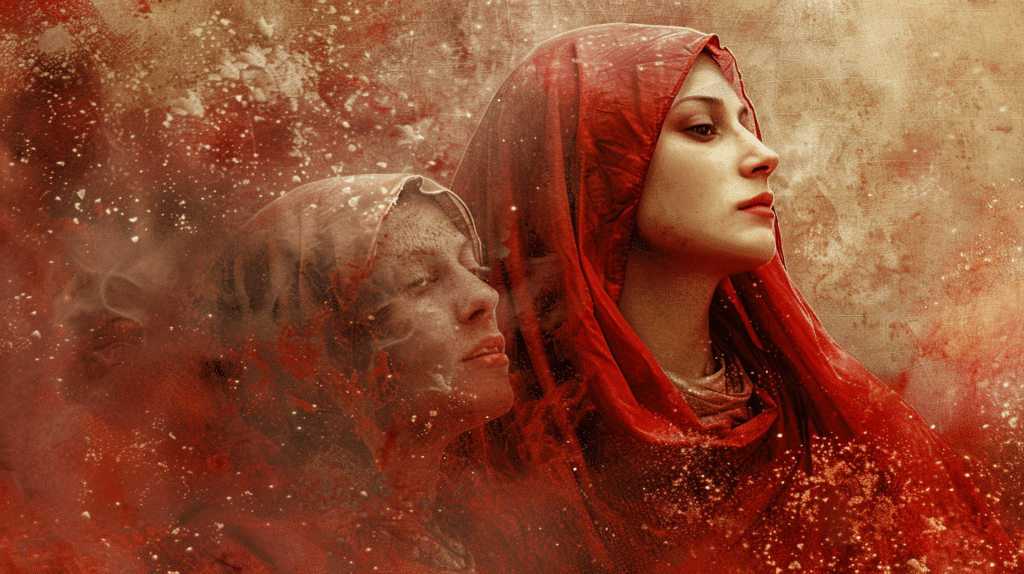
Dante and Beatrice’s Influence on Twin Flame Archetypes in Literature
Dante and Beatrice’s spiritual twin flame bond set a precedent for twin flame archetypes in literature, inspiring subsequent authors to explore love’s metaphysical dimensions. Their relationship exemplifies how classic literature examples of twin flame relationships often transcend the earthly, venturing into the philosophical and the divine.
Through Dante’s visionary narrative, readers gain insights into the enduring appeal of twin flame stories in classic literature, offering a timeless exploration of love’s ultimate potential.
Key Takeaways
- Twin flame dynamics in classic literature often transcend traditional romantic narratives, offering a deeper exploration into the profound, spiritual connections between characters, such as Heathcliff and Catherine’s tumultuous journey in “Wuthering Heights” and the gradual, respectful bond between Jane Eyre and Mr. Rochester.
- The concept of twin flames is beautifully demonstrated through various relationships in classic literature, where intense, soul-deep connections challenge and refine characters, evidenced by the iconic love stories of Romeo and Juliet, and Odysseus and Penelope’s enduring loyalty.
- Twin flame dynamics can manifest in different forms, ranging from immediate, intense attractions to relationships that develop and deepen over time, reflecting a broad spectrum of twin flame experiences across classic narratives.
- Classic literature provides invaluable insights into the twin flame journey, including stages of recognition, crisis, and growth, highlighting the transformative power of these connections as seen in the stories of Tristan and Isolde, and Dante and Beatrice’s spiritual odyssey in “Dante’s Divine Comedy.”
- The enduring appeal of twin flame stories in classic literature underscores humanity’s fascination with exploring the complexities, challenges, and unparalleled beauty of these profound connections, inviting readers to ponder the mystical and otherworldly dimensions of love and companionship.
Exploring the Dynamics of Twin Flames in Classic Literature
Exploring the dynamics of twin flames in classic literature reveals not just the depth of human emotion but the remarkable ways in which these relationships push characters towards their ultimate destinies.
From the stormy moors of “Wuthering Heights” to the spiritual realms of “Dante’s Divine Comedy,” each pair, including Sydney Carton and Lucie Manette’s sacrificial love, embodies the essence of twin flame connections. Their stories highlight the transformative power of love, the importance of equality, and the spiritual growth that arises from such profound connections.
Through these literary masterpieces, readers gain insights into the complexities of love, the challenges of overcoming obstacles, and the beauty of finding one’s other half. These timeless tales continue to inspire and captivate, proving that the search for a twin flame is as much about self-discovery as it is about the union with another.
